Full form of RTI
What is the full form of RTI
RTI: Right to Information
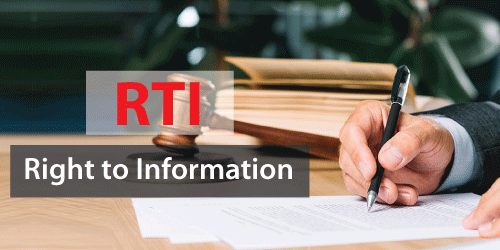
RTI is the abbreviated form of Right to Information. The RTI Act 2005 was introducedon 15 June 2005. It was adopted by the parliament and then came into force or became law on 12 October 2005.
RTI is an act adopted by the Parliament of India; it lays a set of rules, the procedure for the citizen's right to information. It is often known as the replacement of the Freedom of Information Act, 2002. Under this RTI Act, any citizen of India has the right to request or seek any information from the public authority or the body of the government. Moreover, the authority approached is required to reply within the stipulated time, primarily being 30 days.
Suppose the matter or the information is pertaining to someone's life, and it's crucial for the information seeker's life. In that case, the said information has to be provided or served within 48 hours by the respective authority. The RTI Act of 2005 also makes it necessary for every public authority to maintain their records with the use of computers for extensive reach, dissemination of the information, making it easy and viable for the citizens.
On average, around 5000 RTI applications are filed in various public authorities; however, it is interesting to note that since this Act came into force within the first ten years, more than 17,500,000 applications have been filed.
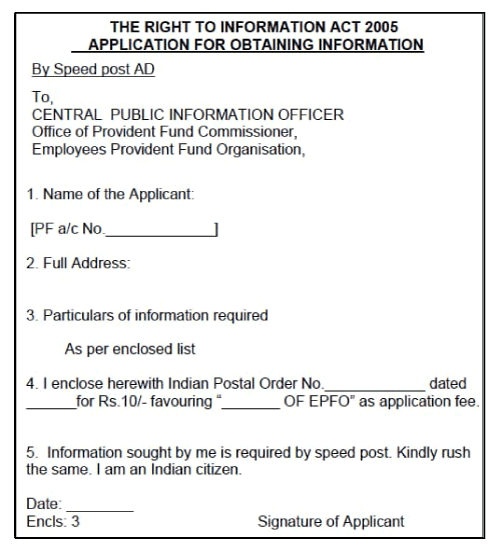
RTI is not a Fundamental Right in the Constitution of India, but it often safeguards or protects fundamental rights to Freedom of Expression or Speech under Article 19(1)(a) and Right to Life or Personal Liberty under Article 21 of the Constitution.
When the information is requested from the public authority or the government department, the PIO or the Public Information Officer, or the First Appellate Authority has the responsibility to address and provide the information to the petitioner.
The main objective of this Act was to combine or unite the Fundamental right, Freedom of speech, in the Indian constitution. This makes this Act or Right to Information an implied fundamental right.
RTI has been very helpful for the citizens of India; it has superseded various laws that prohibited sharing of information, like the Official Secrets Act 1923 with the common citizens of the country.
The goal of the objective of the RTI has been to protect the access to data and to ensure accountability, transparency in the functioning of public authorities. It is an ideal or the perfect tool for the Indian citizen that enables them to inspect the work of the government by asking them or requesting for information or copies of the documents.
Scope
The RTI Act 2005 is applicable for the entire country, except in the state of Jammu and Kashmir. It comprises and covers all the authorities like constitutional, executive, legislature and judiciary, etc. It even includes the bodies that are owned, managed, or controlled by the government or non-governmental organisations.
However, private authority is not included in this Act, but private bodies that often get more than 95% of the fund from the govt fall under the purview of the RTI Act 2005.
In the beginning, political parties were considered to be public authorities and come under the realm of the RTI act 2005. CIC or the Central Information Commission also reinstated this often; all the parties like Congress, BJP, NCP, CPI, BSP, etc., have the character of being a public authority as they are funded by the Government of India. But in 2013, an amendment was introduced in RTI, which ultimately removed political parties from the law. At present, no political parties come under the RTI act 2005.
Amendments
With the passage of time, there have been many amendments under the RTI act. On 25 July 2019, there was a modification in the terms and conditions of service of CIC and the information commissioners.
There also has been an amendment that has covered the office of Chief Justice of India within the realm of the Right to Information Act.
Working or Functioning or the Process
The Right to Information is controlled and managed by two bodies;
CIC or the Central Information Commission- Chief Information Commissioner, supervises all departments and the ministries at the centre with their own respective PIO or the Public Information Officers. CIC are, however, directly under the President of India.
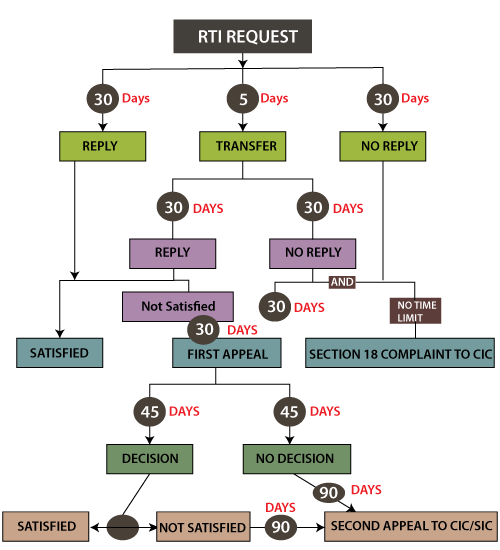
State Information Commissions- SPIOs or the State Public Information Officers supervise state departments, ministries. The office of SPIO comes under the purview of respective Governors of the State.
Central and the State Information Commissions are independent bodies or authorities, and CIC or the Central Information Commission has no jurisdiction over the SIO.
Fees
An Indian citizen that wishes to seek information from a specific authority only needs to send the application along with the Postal Order or DD that is payable to the Accounts Officer of the public authority. It charges no fees from the poor or the underprivileged people. Mostly the fees is of Rs. 10, but if the individual requires more information or the documents supporting the information, further charges need to be paid. Detailed charges are informed to the applicant by the respective PIO or the Public Information Officer as laid under the RTI act.
Digital RTI System
A digital website has also been established, namely the RTI portal. This website helps citizens get quick access to information on various appellate and first appellate authorities, PIO, etc., and other crucial RTI information. This portal is an initiative by DOPT or the Department of Personnel and Training, Ministry of Personnel, Public Grievances and Pensions.
Objective or Goal of RTI
The most crucial or essential objective of RTI is to strengthen or empower the citizens of India, especially by encouraging transparency and accountability of the various government departments, Thereby, help in bringing the real picture, making the citizens of India better informed, vigilant and pushing the government to be more accountable to its citizens.
RTI- What can you get from it?
A citizen of India is entitled to request or seek information from the public authority, which is necessary for the respective public authority to respond within 30 days. Now, what are the information or the documents that one can ask for?
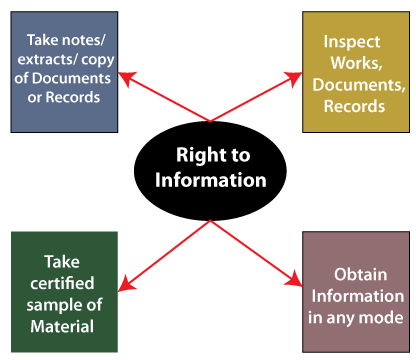
RTI gives you the right to inspect the documents, enquire into the government functioning, records even take notes or certified copies of the orders, memorandums, records, or other crucial documents.
One can even request for certified samples of the materials passed or used. The citizen can even request printouts of the information or information through electronic modes like CD, pen drive, video, tapes, or through emails or data that is available in the electronic form or device.
Although any extra costs of the documents, printing, etc., are to be given by the individual that has requested the information.
The process to Request Information
Any Indian citizen is eligible to seek information under RTI; there is no minimum or maximum age for this.
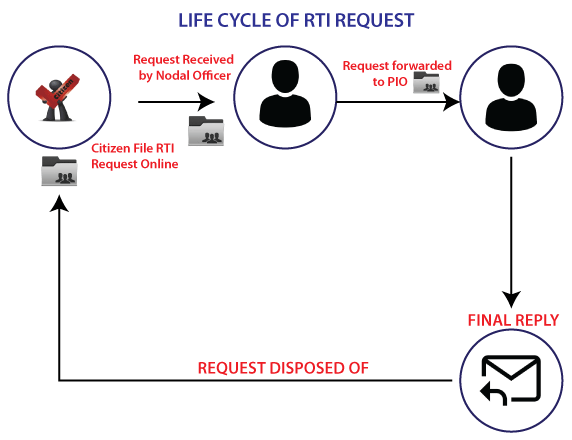
Process
Coming to the process;
1. In order to request the information, one needs to submit the request either through a handwritten application or types, or one can even download the request form from the RTI portal.
2. Then the application of the form needs to be filled either in Hindi or English or in any state language,
3. The same then needs to be submitted along with the necessary information like personal details (name, contact number, and address) along with the name and address of PIO; information that is being requested and Postal Order of Rs10, in case you are applicable to pay the fees.
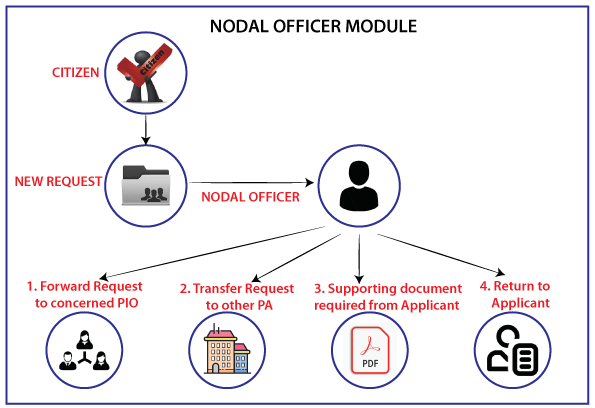
4. In case, you have not received a reply within 30 days or the reply you have received is unsatisfactory, you can go ahead with the first appeal within 30 days from the receipt of the decision by the PIO or the CPIO. There is no fee prescribed for first appeal.
5. If you do not receive a reply after the first appeal within 30 days or the reply you have received is unsatisfactory, you can go ahead with the second appeal within 30 days from the receipt of the decision by the PIO or the CPIO. There is no fee prescribed for this. The second appeal is mainly submitted with the CIC or the Chief Information Commission.
Then a date is given by the CIC for personal presence, and one can personally visit the CIC with their case file to seek the information they had requested.
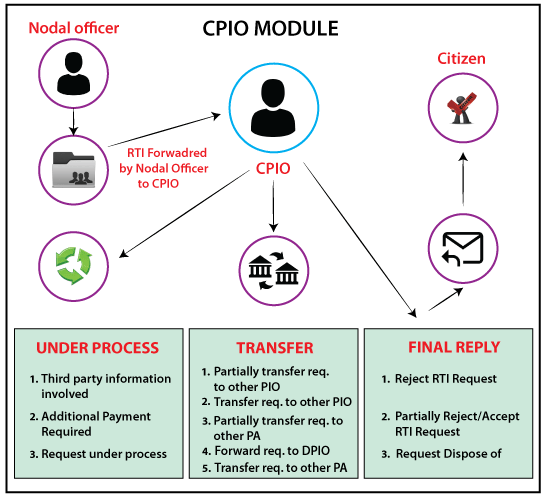
Uses of RTI
- There is no doubt that the mechanism of RTI is a success. It is one of its kind laws that permits an individual to raise his voice to know the truth; it empowers the citizen of India to question, to know, and even cause a penalty on the officer that is not performing his duty properly.
- RTI can impose a penalty of Rs.250 per day through the Information Commissioner if the PIO or the CPIO remains incapable of providing the information within the stipulated time period. Moreover, if the information provided by the concerned officer is false or misleading, it can even attract a penalty of Rs.25000 on the PIO or the CPIO.
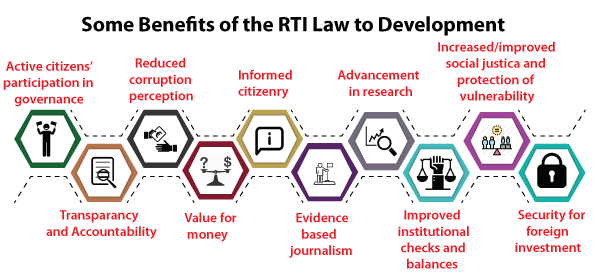
- The penalty can also be imposed for providing incomplete information or even rejecting the application. This penalty is mostly deducted from the salary of the officer.
- However, apart from the penalties, RTI has also been supportive in solving or addressing various problems- individuals used to get harassed for accessing the status of their passport, Aadhar card, property documents, FIR, etc. Officer used to ask for a bribe, but with the coming of RTI, all such cases have reduced marginally, and citizens can have easy access to the information about their documents such as, FIR, Aadhaar card, passport without any harassment.
- RTI has also been very beneficial in solving social problems like park maintenance, fixing of potholes, social auditing of government projects, etc., provided citizens with social security benefits, financial benefits, and much more.
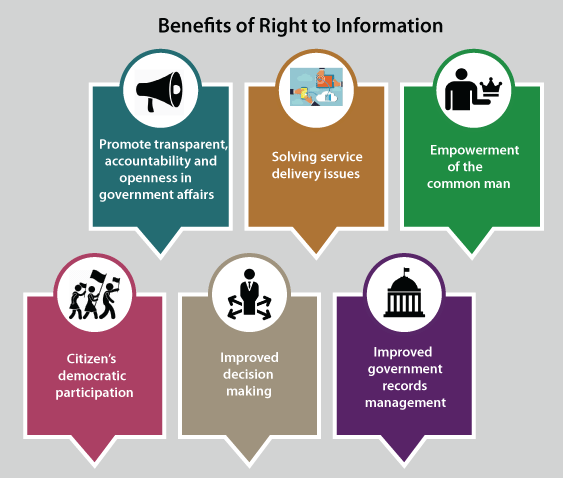
- RTI has today become an essential tool for the citizens as it has made the system more transparent, less corrupt, and accountable.
However, there have been various controversies with RTI from time to time. There have been refusals on providing information on high-profile projects, personalities. There also have been attacks on the RTI activists that are regretful.